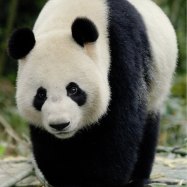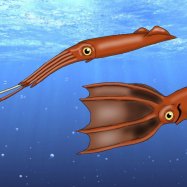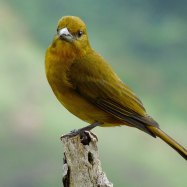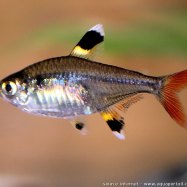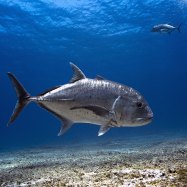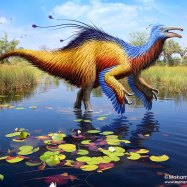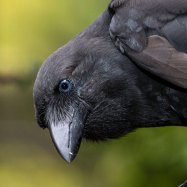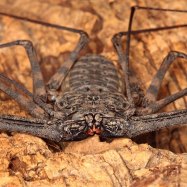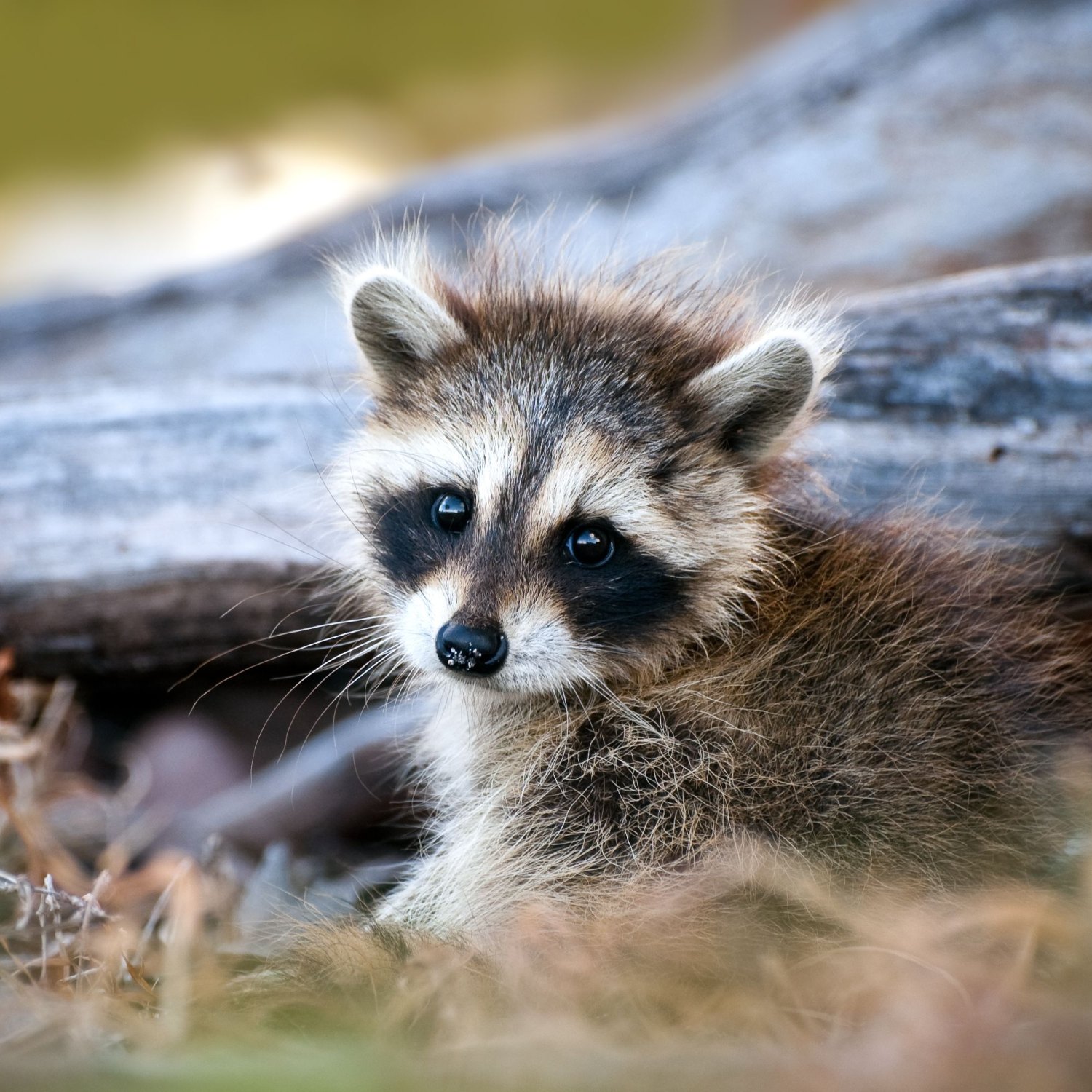
Raccoon
40 to 70 cm
The raccoon, a common critter found throughout North America, is easily recognized by its distinct black mask and ringed tail. These intelligent creatures belong to the Procyonidae family and have a stocky and compact body shape. On average, they can grow up to 40 to 70 cm in length. Keep an eye out for these curious and adaptable animals in your neighborhood! #RaccoonFacts #NorthAmericanWildlife
Animal Details Summary:
Common Name: Raccoon
Kingdom: Animalia
Habitat: Forests, wetlands, urban areas
Fascinating Facts About the Mischievous Raccoon
When you think of a raccoon, you may immediately picture a cute and furry animal with a bandit mask and a ringed tail. While these physical features may make them seem adorable, raccoons are far from just another cute critter. In fact, they are one of the most fascinating and unique animals in the animal kingdom.Scientifically known as Procyon lotor, the raccoon belongs to the Animalia kingdom, Chordata phylum, and Mammalia class Raccoon. They are part of the Carnivora order and Procyonidae family, which also includes coatis, ringtails, and olingos. However, unlike their carnivorous relatives, raccoons are omnivorous, relying on a varied diet to survive in their natural habitat.
Raccoons are widespread animals, with a natural habitat that includes forests, wetlands, and urban areas. They can be found throughout North America, including the United States, their country of origin. Whether you live in a densely populated city or a rural countryside, chances are you've encountered one of these intelligent and mischievous creatures at some point.
But there is much more to raccoons than what meets the eye. In this article, we'll dive into the fascinating world of these creatures, exploring their unique characteristics, behavior, and impact on the environment.
Without further ado, let's discover the incredible world of the raccoon.
A Masked Marauder: Physical Characteristics of Raccoons
Raccoons are easily identifiable by their grayish-brown fur and their distinctive black "mask" on their face Russell Terrier. This mask serves a purpose beyond just making them look like tiny bandits, as it helps reduce glare when foraging for food at night. Their fur is also incredibly dense, providing insulation and protection during cold weather.In addition to their signature fur, raccoons also have a bushy ringed tail, which they use for balance and communication with other raccoons. They also have small, rounded ears and a pointed nose, giving them a distinctive and cute appearance.
But don't be fooled by their cuteness. Raccoons have a stocky and compact body shape, with sharp claws and teeth. These features make them excellent climbers and scavengers, able to access food sources that other animals cannot.
On average, raccoons measure between 40 to 70 centimeters in length and can weigh anywhere from 3.5 to 9 kilograms. However, these measurements can vary depending on factors such as age, sex, and geographical location.
A Survivor in the Wild: Habitat and Adaptations of Raccoons
As mentioned earlier, raccoons are adaptable creatures, able to thrive in a variety of habitats. They are primarily found in forests, wetlands, and urban areas, making use of their intelligence and resourcefulness to survive in different environments.Their sharp claws, dexterous paws, and excellent climbing abilities make them well-suited for life in wooded areas. In these habitats, they can find shelter and food from trees, burrows, and natural features like rock crevices.
In urban areas, raccoons face a different set of challenges. They have to navigate through human-made structures and hazards, such as cars and pollution. However, their intelligence and resilience help them find ways to adapt and thrive in these conditions.
One example of this is their behavior of opening trash cans and raiding gardens in search of food. While this may be a nuisance to humans, it is a survival technique for raccoons, who have learned how to take advantage of human waste.
Another fascinating adaptation of raccoons is their ability to den in trees, which helps them stay safe from predators and harsh weather conditions. They also have a thick layer of fat under their skin, providing extra insulation during the cold winter months.
These unique adaptations, along with their omnivorous diet, allow raccoons to survive and thrive in a wide range of environments, making them one of the most versatile animals in North America.
A Clever Creature: Behavior and Intelligence of Raccoons
Raccoons are known for their mischievous behavior, often getting into trouble and causing a nuisance in urban areas. But their actions are not just for fun; they are incredibly clever creatures with the intelligence to match.Their problem-solving skills and adaptability are evident in their ability to thrive in a variety of environments, as mentioned earlier. But it goes even further than that. Raccoons are excellent at remembering solutions to problems, even after a long period.
For example, in a study conducted by professor Suzanne MacDonald at York University, raccoons were given a series of tasks to retrieve food from objects such as jars and capsules. The raccoons were successful in solving these tasks, even when separated from one another. When reintroduced to the task a year later, the raccoons were able to solve it again without any trouble, demonstrating their long-term memory and problem-solving skills.
In addition to their intelligence, raccoons also exhibit advanced communication skills, using a combination of vocalizations, body language, and scent marking to communicate with each other. They also have complex social structures, with females forming close bonds with their offspring while males tend to be more solitary.
Another interesting behavior of raccoons is their habit of "handwashing." They will often dip their food in water before eating, giving the illusion of washing their hands. This behavior serves a purpose beyond cleanliness, as it helps soften their food and makes it easier to eat.
An Important Role in the Ecosystem: The Impact of Raccoons
While raccoons may be seen as pests by some, they play an essential role in the ecosystem. As omnivorous animals, they help control the populations of other animals by eating a variety of foods, including fruits, nuts, insects, small mammals, and even garbage.They are also important seed dispersers, as they consume seeds from fruits and berries and then distribute them in other areas through their scat. This process helps with the growth and diversity of plant species, ultimately benefiting the ecosystem.
In urban areas, raccoons provide an important service by scavenging through human trash and removing potential health hazards. This, in turn, reduces the spread of diseases and prevents overpopulation of certain species.
However, like any animal, even the clever and adaptable raccoon can sometimes have a negative impact on its environment. In urban areas, they may cause damage to property while foraging for food, and in some cases, they can compete with native wildlife for resources.
But overall, raccoons play an essential role in the delicate balance of ecosystems and should be appreciated for their unique contributions.
A Threatened Species?: The Future of Raccoons
While raccoons are currently not considered a threatened species, their populations face certain challenges, particularly in urban areas. As mentioned earlier, their adaptation to urban environments can sometimes lead to conflict with humans, leading to their removal or relocation.In rural areas, they may face threats from predators, such as coyotes, and diseases like rabies and distemper. Climate change may also have an impact on their habitats and food sources, as well as increase the frequency of extreme weather events that can affect their survival.
Therefore, it is crucial to implement responsible coexistence practices when it comes to raccoons and other wildlife. Providing proper education and resources to communities can help reduce potential conflicts and ensure the safety of both humans and raccoons.
A Charmingly Curious Creature: The Fascinating World of Raccoons
Raccoons may be small animals, but they have captured the hearts and curiosity of humans for centuries. Native American folklore portrays them as cunning tricksters, while popular culture often depicts them as lovable and mischievous characters.But beyond their cute and curious exterior, raccoons are highly adaptable, intelligent, and resilient animals. Their physical abilities, clever behavior, and essential role in ecosystems make them a species worth appreciating and protecting.
So the next time you come across a raccoon in your backyard or a nature hike, take a moment to appreciate the fascinating world of these masked marauders. You may just learn something new and gain a newfound respect for these incredible creatures.

Raccoon
Animal Details Raccoon - Scientific Name: Procyon lotor
- Category: Animals R
- Scientific Name: Procyon lotor
- Common Name: Raccoon
- Kingdom: Animalia
- Phylum: Chordata
- Class: Mammalia
- Order: Carnivora
- Family: Procyonidae
- Habitat: Forests, wetlands, urban areas
- Feeding Method: Omnivorous
- Geographical Distribution: North America
- Country of Origin: United States
- Location: Throughout North America
- Animal Coloration: Grayish brown with black fur
- Body Shape: Stocky and compact
- Length: 40 to 70 cm
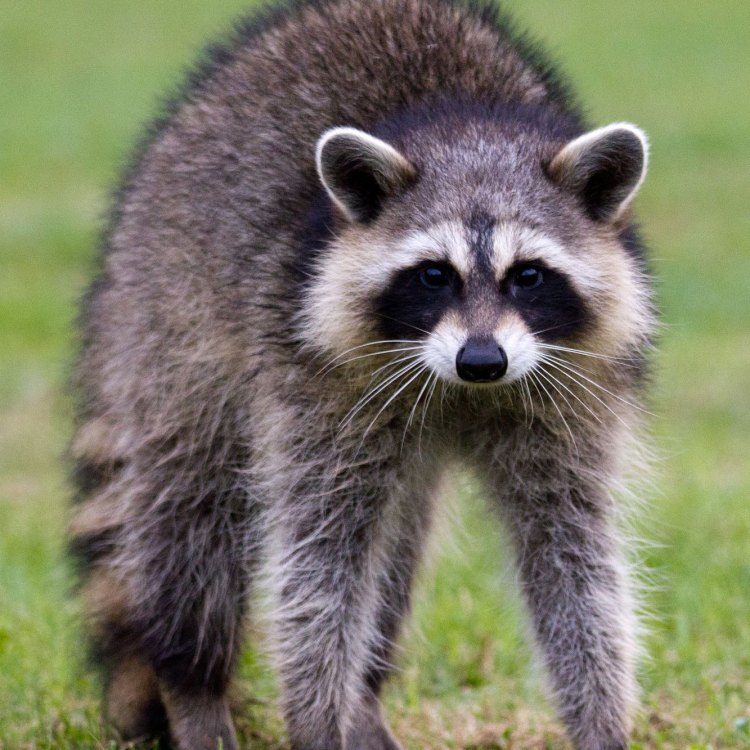
Raccoon
- Adult Size: Medium-sized
- Average Lifespan: 2 to 3 years in the wild, up to 20 years in captivity
- Reproduction: Sexual
- Reproductive Behavior: Polygynandrous (Promiscuous)
- Sound or Call: Chittering, purring, growling
- Migration Pattern: Non-migratory
- Social Groups: Solitary or in small groups
- Behavior: Nocturnal and primarily arboreal
- Threats: Habitat destruction, road accidents, hunting
- Conservation Status: Least Concern
- Impact on Ecosystem: Seed dispersal, control of pest populations
- Human Use: Fur trapping, hunting, pets
- Distinctive Features: Mask-like facial markings, ringed tail
- Interesting Facts: They have incredible dexterity with their paws.
- Predator: Coyotes, bobcats, domestic dogs
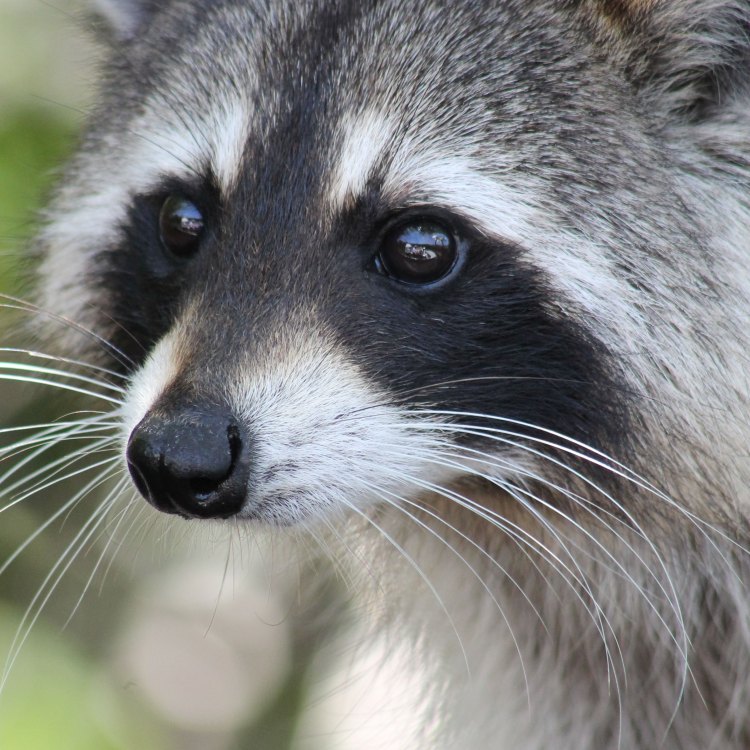
Procyon lotor
The Incredible Raccoon: A Masked Marvel of Nature
In the animal kingdom, there are many fascinating creatures that capture our attention and pique our curiosity. From the majestic lion to the playful dolphin, each species has its unique characteristics and roles in the ecosystem. However, there is one animal that often goes unnoticed and underestimated – the raccoon.Specifically known as the Common Raccoon, these medium-sized mammals are native to North America and can also be found in parts of Europe and Asia PeaceOfAnimals.Com. With their signature mask-like facial markings and ringed tails, raccoons are instantly recognizable and have become a beloved animal in popular culture. But beyond their cute and quirky appearance, raccoons have many other unique features and behaviors that make them a truly remarkable species.
In this article, we will delve deep into the world of raccoons, exploring their size, lifespan, reproduction, behavior, threats, and conservation status. We will also take a closer look at their impact on the ecosystem and their interactions with humans. By the end, you will have a newfound appreciation for these elusive creatures and their essential role in maintaining the balance of nature.
Size and Lifespan
As mentioned, raccoons are medium-sized mammals, with an average weight of 12-20 pounds and a length of 16-28 inches. They have stocky bodies, short legs, and sharp claws that make them excellent climbers, as well as semi-aquatic in some cases. Their distinctively striped tail can vary in length and is used for balance, communication, and even as a sensory organ.In the wild, raccoons have an average lifespan of two to three years due to the many threats they face, such as predators, disease, and harsh weather conditions Rock Python. However, in captivity, they can live up to 20 years, making them the oldest living carnivores in captivity. This is due to the lack of predators and access to proper healthcare and diet.
Reproduction and Behavior
Like many mammals, raccoons reproduce sexually and have a polygynandrous (promiscuous) mating behavior, meaning both males and females mate with multiple partners. Their breeding season usually occurs between January and March, with females giving birth to a litter of 1-7, usually in April or May.Raccoons are also known for being excellent mothers, with the females caring for the young on their own. They create a den for their kits (baby raccoons), typically in a tree hollow, and will move them to a new location every few days. The kits stay with their mother for about a year, learning essential skills such as hunting, foraging, and climbing.
When it comes to their behavior, raccoons are incredibly adaptable and can thrive in various environments, from forests to urban areas. They are nocturnal animals, meaning they are most active at night, and their excellent night vision and acute hearing help them navigate and hunt in the dark. They are also primarily arboreal, spending most of their time up in trees, where they can easily escape danger and search for food.
Sounds and Calls
Raccoons have a wide range of vocalizations, including chittering, purring, and growling. Their chittering noise is a friendly greeting or a sign of contentment, while purring is usually a sign of relaxation or pleasure. When threatened or in pain, they will make a distinct growling sound, which can be quite intimidating coming from such a small animal.They also communicate through a variety of body postures, such as standing on their hind legs to get a better view or using their paws to express certain emotions. They are also known for their strong scent-marking behavior, leaving their signature odor on objects and territories to communicate with other raccoons.
Social Structure and Migration Pattern
Raccoons are solitary animals, meaning they do not live in permanent groups or packs. However, they may form small groups with other raccoons for hunting or mating purposes. They are also not migratory animals, with their movements primarily depending on food availability and den locations.Raccoons are highly territorial and will defend their territories from other raccoons, especially during the breeding season. They are also known for being relatively tolerant of other species, with some cases of raccoons coexisting with other animals such as skunks and opossums.
Threats and Conservation Status
Despite being such adaptable animals, raccoons still face many threats that endanger their survival. Habitat destruction, particularly from urban development, is a significant threat to their populations. As their natural habitat is destroyed, raccoons are forced to seek shelter and food in human-populated areas, increasing the likelihood of conflict and accidents.Speaking of accidents, road collisions are also a significant threat to raccoons, as they often forage along roadsides for food and are not fast enough to avoid cars. They are also vulnerable to disease and parasites, such as rabies and roundworms, which can have devastating effects on their populations.
On top of these threats, raccoons are also hunted for their fur, which is sold in the fur trade market. Despite these threats, the International Union for Conservation of Nature (IUCN) currently lists raccoons as a species of "least concern." This is due to their wide distribution and adaptability, but continued monitoring and conservation efforts are necessary to ensure their survival.
Impact on the Ecosystem
Raccoons play a vital role in the ecosystem, with a significant impact on both plants and animals. As omnivores, they have a diverse diet that includes insects, small animals, fruits, and nuts. This makes them essential in controlling pest populations, such as insects and rodents, which helps maintain the balance of the ecosystem.Their foraging and hunting activities also contribute to seed dispersal, which helps generate new plant growth and promotes biodiversity. Raccoons are also known to eat crayfish and clams, which helps keep these populations in check and maintain a healthy aquatic environment.
Human Interactions
Raccoons have a long history of interactions with humans, and their relationship has been a complicated one. In the past, raccoons were seen as a nuisance and were often trapped and killed. However, in recent years, attitudes towards raccoons have changed, with people appreciating their intelligence and adaptability.However, human-wildlife interaction can still result in negative consequences for both parties. As mentioned, raccoons can become a nuisance when they forage and damage property, leading to conflicts with humans. They can also transmit diseases to humans and domestic animals, making it essential to give them their space and avoid feeding or interacting with them.
Despite these challenges, many people also see raccoons as fascinating and even keep them as pets in certain areas where it is legal. However, adopting a wild animal as a pet comes with its own set of challenges, and it is always best to leave them in their natural habitats.
Distinctive Features and Interesting Facts
Aside from their recognizable mask-like facial markings and ringed tails, raccoons have many other distinctive features that make them truly remarkable. One of their most impressive features is their incredible dexterity with their paws. They have small, flexible fingers that allow them to grip objects and even open latches and containers, making them excellent foragers and escape artists.Raccoons are also known for their keen sense of smell, which they use to find food and navigate their surroundings. They have a special olfactory chamber in their nose that helps them differentiate between smells. This allows them to locate food even in the dark and gives them an advantage over their prey and predators.
Perhaps one of the most curious and interesting facts about raccoons is their tendency to "wash" their food before eating it. This behavior has been observed in captive raccoons, but there is no consensus on why they do it. Some theories suggest that they are just mimicking their natural behavior of hunting in water, while others argue that it may help soften their food, making it easier to eat.
Predators
Despite being adaptable and resilient creatures, raccoons still have natural predators in the wild. Coyotes, bobcats, foxes, and domestic dogs are some of the most significant threats to raccoons, especially young kits. These predators are especially dangerous when the raccoon is still young and learning to defend itself.How humans can help
As with any other species, humans play a crucial role in the survival of raccoons. To ensure their continued presence in the wild, there are a few things we can do to help.
The first step is to educate ourselves and others on the importance of raccoons and the threats they face. By understanding their behavior and needs, we can learn to coexist with them and avoid conflicts.
We can also help by being responsible in our waste disposal and not leaving food or scraps outside that can attract raccoons. Building or purchasing raccoon-proof garbage cans can also prevent them from foraging in human-populated areas.
Finally, supporting conservation efforts and responsible wildlife management is vital in promoting the survival of raccoons and other species.
In Conclusion
Raccoons may not be the biggest, fastest, or strongest animal in the wild, but they have proven to be one of the most resilient and adaptable. Their unique features, behaviors, and impact on the ecosystem make them a critical species in the animal kingdom.By understanding and appreciating the role raccoons play, we can learn to co
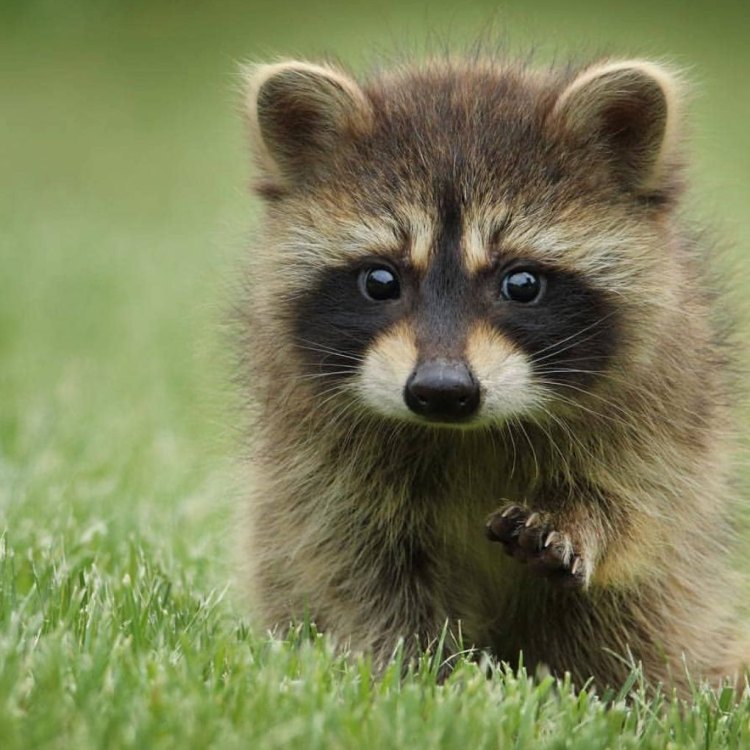
Fascinating Facts About the Mischievous Raccoon
Disclaimer: The content provided is for informational purposes only. We cannot guarantee the accuracy of the information on this page 100%. All information provided here may change without prior notice.

